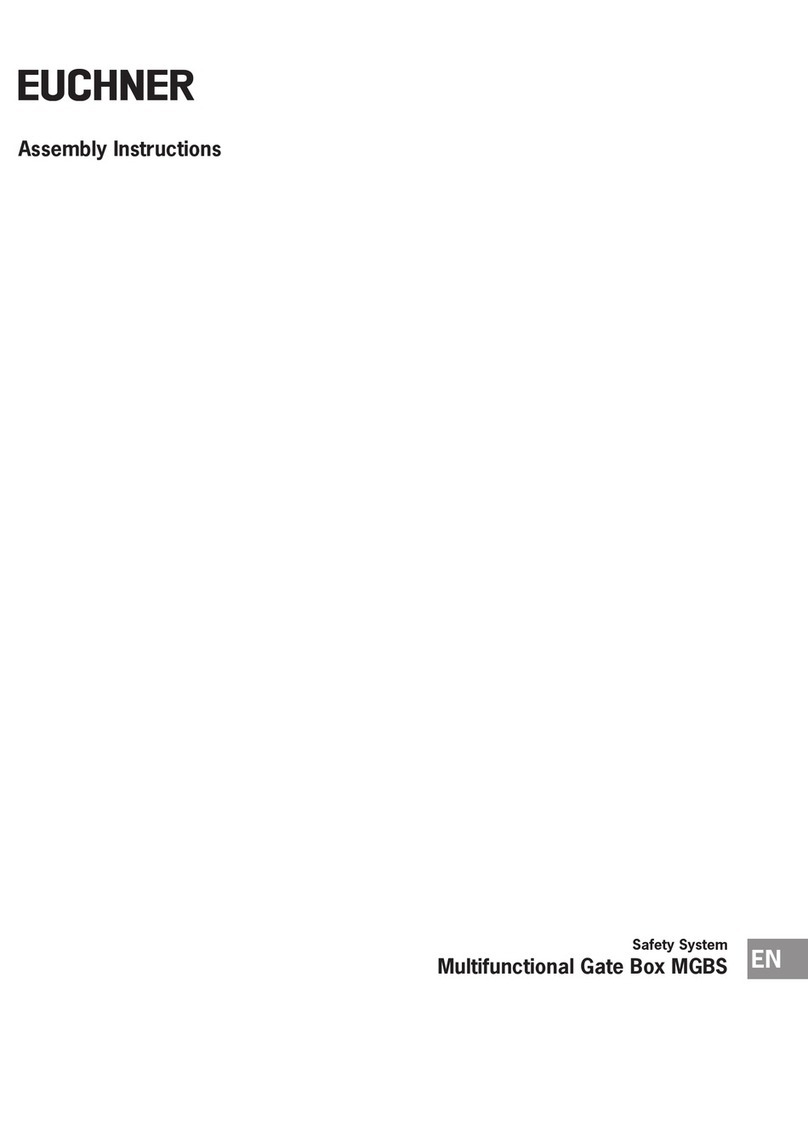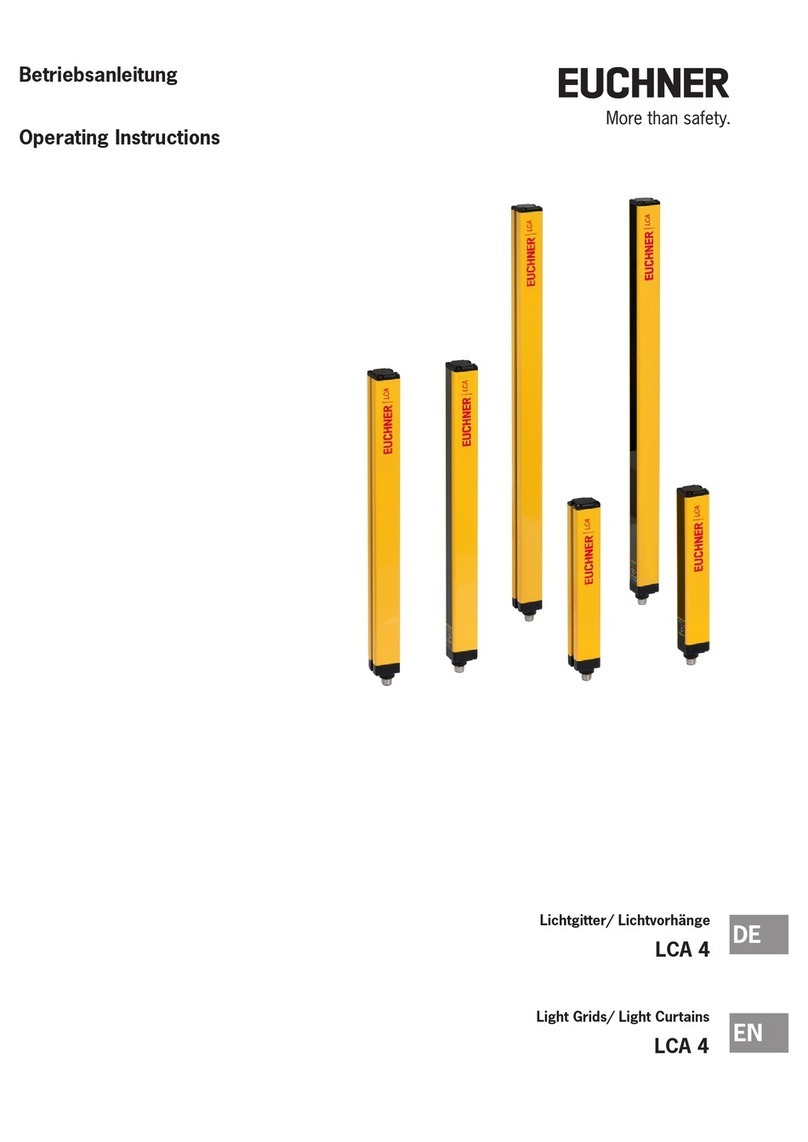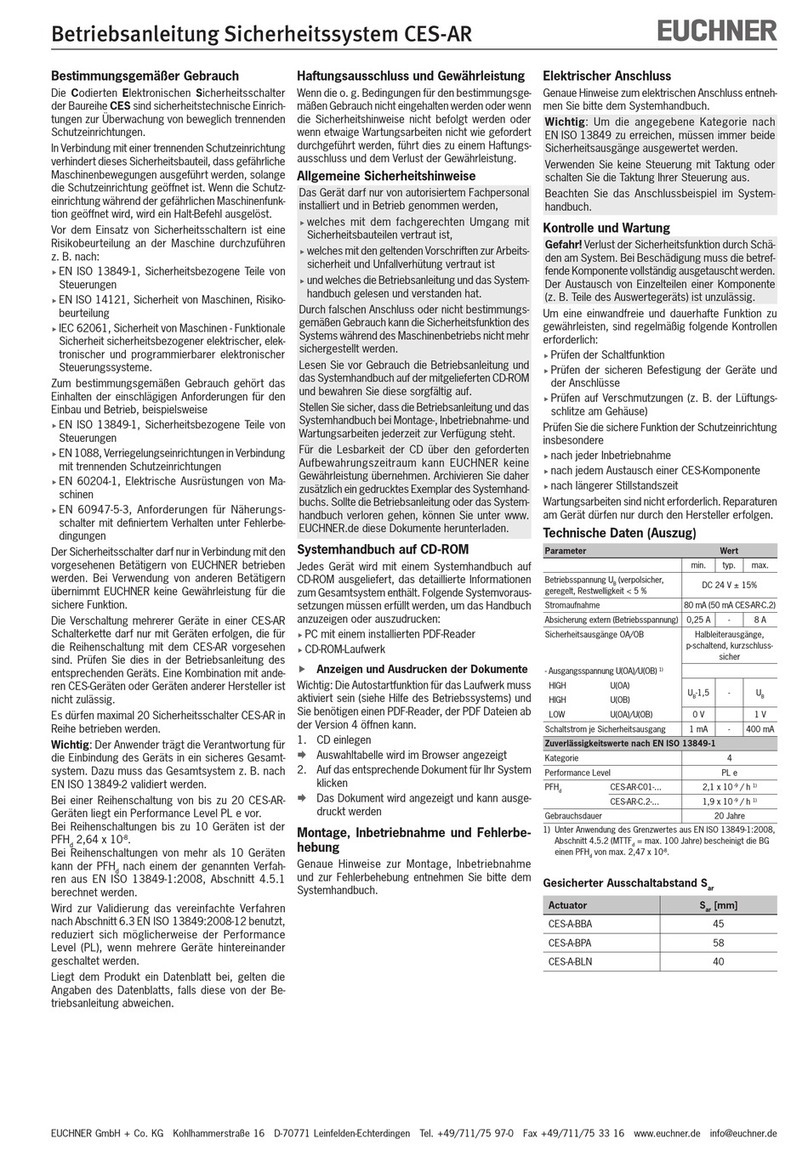
3
2123622-04-06/19 (translation of the original operating instructions)
Operating Instructions Safety Systems
MGB-L..B-PN.-… (PROFINET) and With Expanded Data Structure Type C
EN
13. Setup ................................................................................................................. 22
13.1. Integrating into PROFINET and PROFIsafe .......................................................................................22
13.2. Replacement of an MGB system without programming device ..........................................................22
13.3. System reset to factory settings....................................................................................................22
13.4. Mechanical function test................................................................................................................23
13.5. Electrical function test...................................................................................................................23
13.6. PROFINET data bytes for “standard” and “expanded” data structures
(data blocks for non-safety-related functions)...................................................................................24
13.7. Data blocks for MGB modules........................................................................................................24
13.7.1. Data block for “standard” MGB bus module.....................................................................25
13.7.2. Data block for “expanded” MGB bus module ...................................................................25
13.7.3. Additional button functions (only for conguration with expanded data structure)................26
13.7.4. Data block for MGB locking module L2 ...........................................................................26
13.8. Data blocks of individual functions at a glance ................................................................................27
13.8.1. Data block for “standard” emergency stop function..........................................................27
13.8.2. Data block for “standard” enabling switch function (optional) ............................................28
13.8.3. Data block for “expanded” enabling switch function (optional)...........................................28
13.8.4. Additional button functions (only for conguration with expanded data structure)................28
13.8.5. Data block for “standard” diagnostics function ................................................................29
13.8.6. Data block for “expanded” diagnostics function...............................................................30
13.9. PROFIsafe data bytes (data block for safe functions)........................................................................31
13.9.1. “Standard” PROFIsafe data bytes....................................................................................31
13.9.2. Data block for “standard” PROFIsafe...............................................................................32
13.9.3. “Expanded” PROFIsafe data bytes ..................................................................................33
13.9.4. Data block for “expanded” PROFIsafe .............................................................................33
14. Diagnostic messages of the MGB system............................................................. 36
15. System status table ............................................................................................ 38
16. Technical data .................................................................................................... 39
17. Troubleshooting .................................................................................................. 40
17.1. Latching fault when actuating the escape release............................................................................40
17.2. Fault reset....................................................................................................................................40
18. Service .............................................................................................................. 41
19. Inspection and service ........................................................................................ 41
20. Declaration of conformity ................................................................................... 42
































